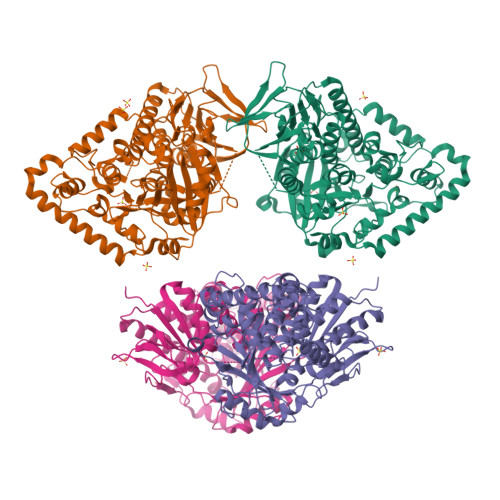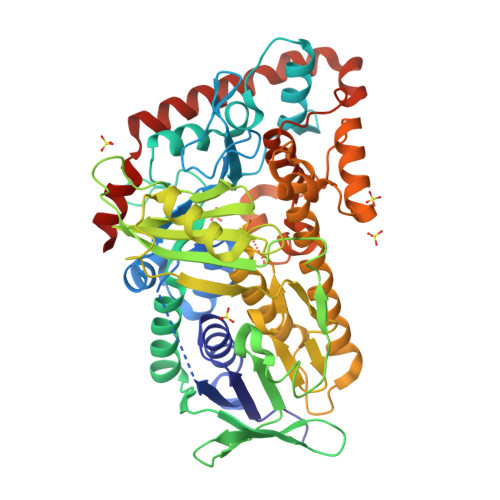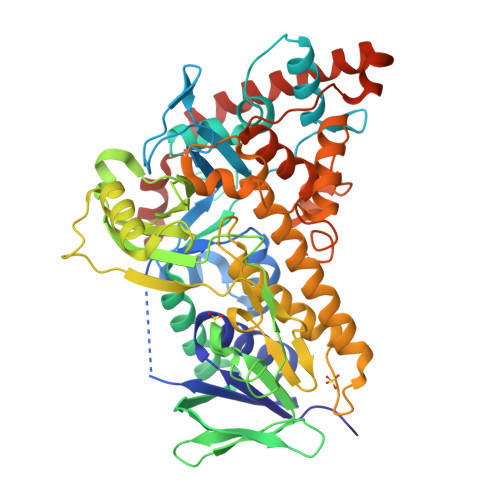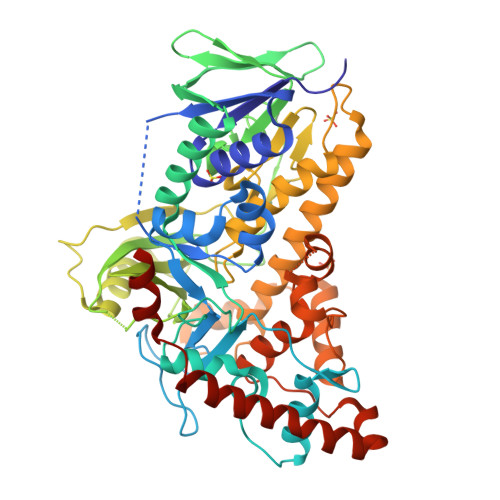Crystallographic and thermodynamic evidence of negative cooperativity of flavin and tryptophan binding in the flavin-dependent halogenases AbeH and BorH.
Ashaduzzaman, M., Lingkon, K., De Silva, A.J., Bellizzi, J.J.(2023) bioRxiv
- PubMed: 37662313
- DOI: https://doi.org/10.1101/2023.08.22.554356
- Primary Citation of Related Structures:
8FOV, 8FOX, 8TTI, 8TTJ, 8TTK - PubMed Abstract:
The flavin-dependent halogenase AbeH produces 5-chlorotryptophan in the biosynthetic pathway of the chlorinated bisindole alkaloid BE-54017. We report that in vitro , AbeH (assisted by the flavin reductase AbeF) can chlorinate and brominate tryptophan as well as other indole derivatives and substrates with phenyl and quinoline groups. We solved the X-ray crystal structures of AbeH alone and complexed with FAD, as well as crystal structures of the tryptophan-6-halogenase BorH alone, in complex with 6-chlorotryptophan, and in complex with FAD and tryptophan. Partitioning of FAD and tryptophan into different chains of BorH and failure to incorporate tryptophan into AbeH/FAD crystals suggested that flavin and tryptophan binding are negatively coupled in both proteins. ITC and fluorescence quenching experiments confirmed the ability of both AbeH and BorH to form binary complexes with FAD or tryptophan and the inability of tryptophan to bind to AbeH/FAD or BorH/FAD complexes. FAD could not bind to BorH/tryptophan complexes, but FAD appears to displace tryptophan from AbeH/tryptophan complexes in an endothermic entropically-driven process.
Organizational Affiliation:
Department of Chemistry and Biochemistry, The University of Toledo, Toledo OH 43606.






















